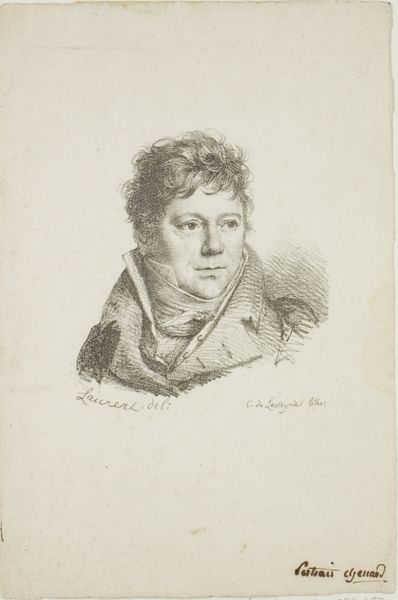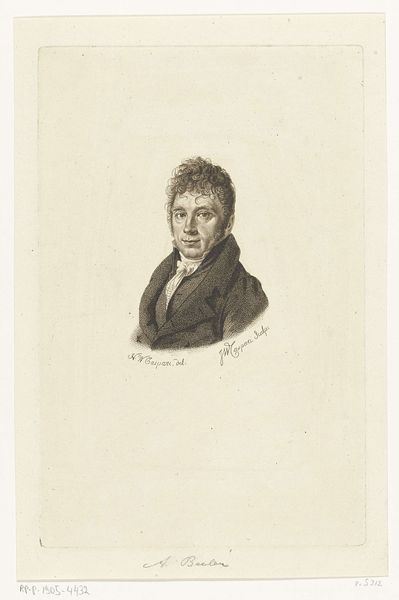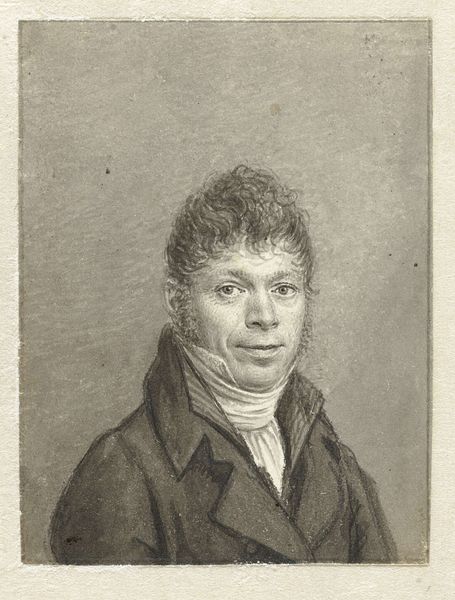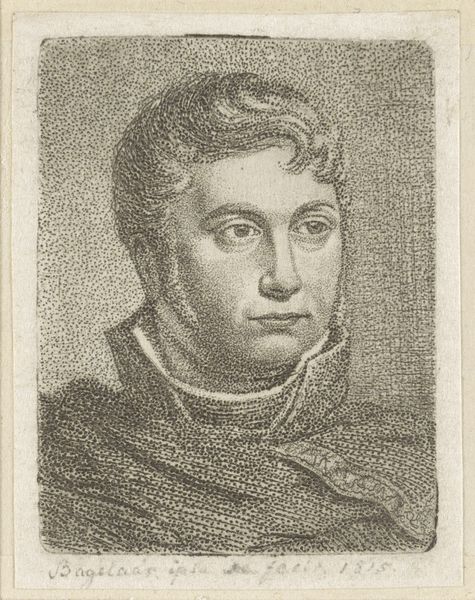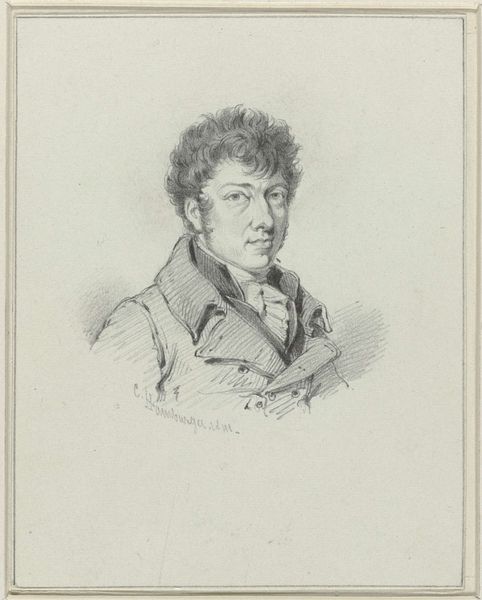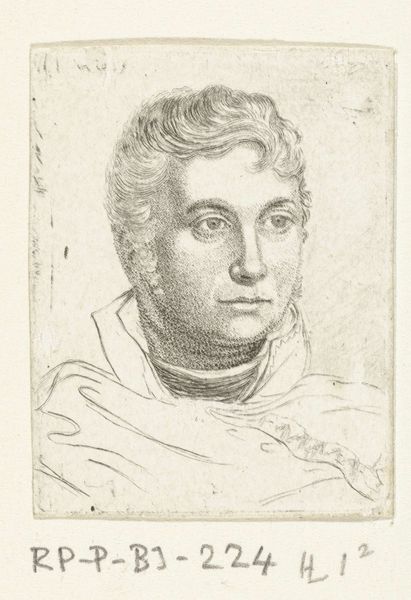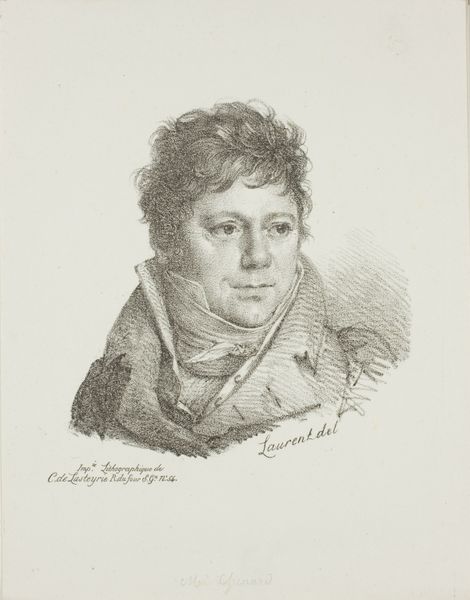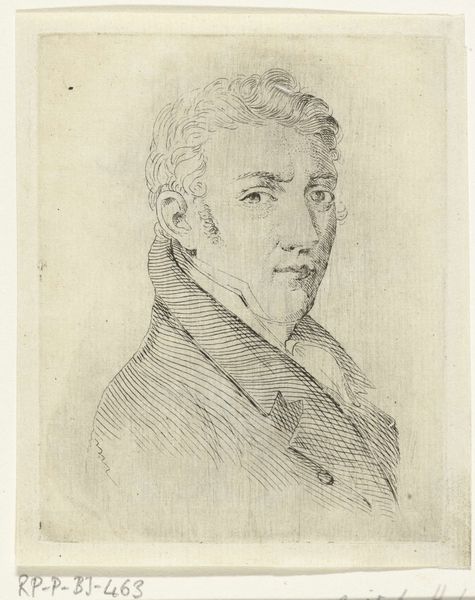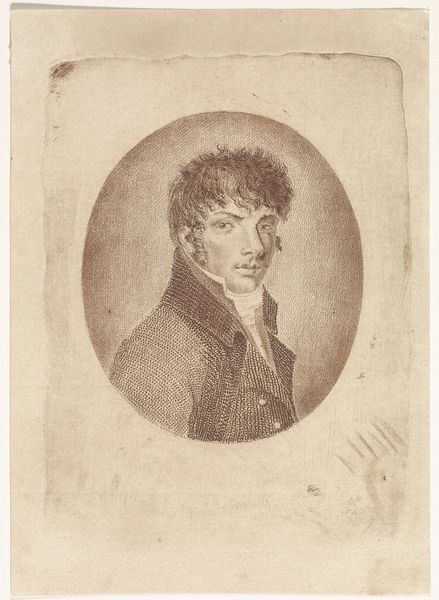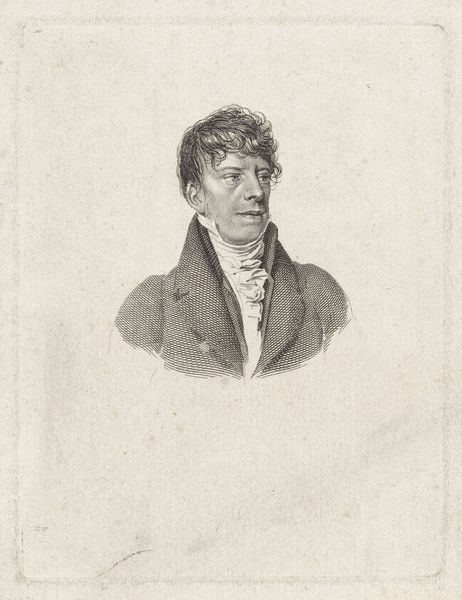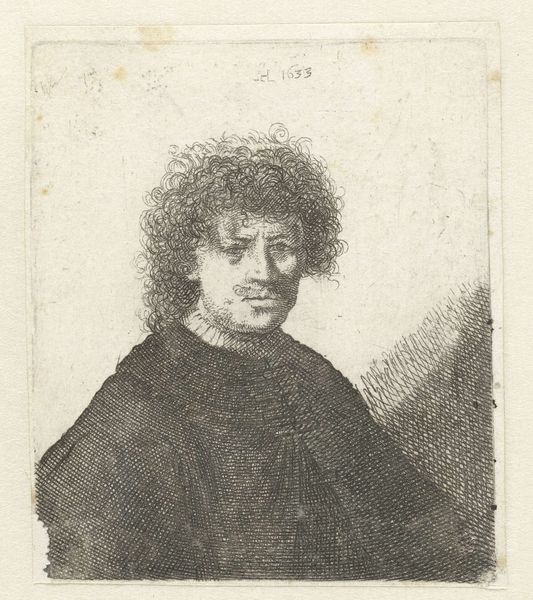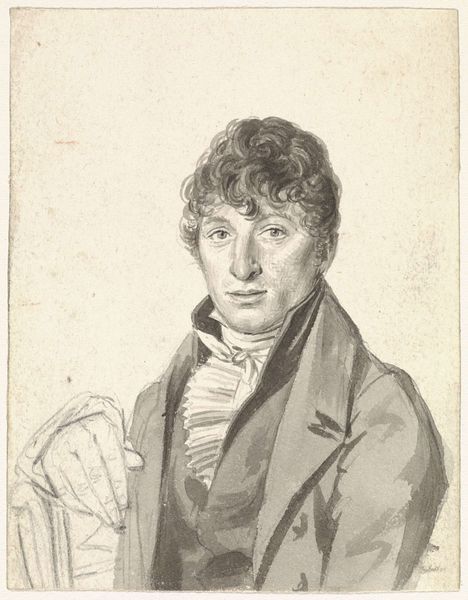
drawing, charcoal
#
portrait
#
pencil drawn
#
drawing
#
facial expression drawing
#
self-portrait
#
pencil sketch
#
charcoal drawing
#
portrait reference
#
pencil drawing
#
romanticism
#
animal drawing portrait
#
portrait drawing
#
charcoal
#
portrait art
#
fine art portrait
Dimensions: height 346 mm, width 258 mm
Copyright: Rijks Museum: Open Domain
Curator: Wouter Johannes Troostwijk’s self-portrait, created circa 1792-1810, strikes me immediately with its subtle play of light and shadow. It’s executed in charcoal or pencil, giving it an intimate, almost vulnerable quality. What are your initial impressions? Editor: There's an appealing directness to this self-portrait, isn't there? The softness of the medium combined with Troostwijk's gaze evokes a sense of Romantic sensitivity. But what societal pressures or artistic trends may have shaped the artist's decision to portray himself this way, using such understated materials? Curator: That's a critical point. We have to consider the social history of portraiture during the late 18th and early 19th centuries. Self-portraits became a tool for artists to assert their identities and to navigate the expectations placed upon them by academies and patrons. What narrative is he creating? Is it one of introspection or perhaps an aspiring professional looking for commissions? Editor: Or consider that self-portraits were used as calling cards. A glimpse into an artist's personality as well as a demonstration of skills. I find the execution itself telling; the soft gradations, almost atmospheric shading and light – how might those choices challenge or uphold conventional artistic boundaries of the period? Curator: Absolutely. Also the interplay of the public and the private sphere is a dynamic to examine. I also think it's interesting to examine whether we read into his slight smile and gentle gaze an artist taking ownership of his image, pushing back against perhaps restrictive societal norms of masculinity and artistic genius. Editor: Considering its location at the Rijksmuseum, I’m led to reflect on how institutions shape the viewing experience. By presenting it within this space, the work takes on the aura of established art history and perhaps shifts meaning for contemporary audiences. What kind of impact does it have on current dialogues of Dutch national identity and artistic heritage? Curator: Food for thought, certainly. Thinking about his expression and medium, Troostwijk delivers intimacy and directness, as if inviting us into his personal space. He lets us analyze his genius while still guarding his image in a controlled setting, and allowing audiences across generations a peek inside of a Romanticist's mind. Editor: Ultimately, the charcoal strokes present not just an artist, but a subject of continuous conversations that will echo for generations to come.
Comments
No comments
Be the first to comment and join the conversation on the ultimate creative platform.
